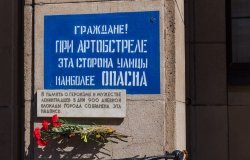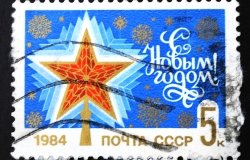Soviet "Tamizdat" and Contraband Literature: An Interview with James H. Billington Fellow Yasha Klots
Yasha Klots is a James H. Billington Fellow with the Kennan Institute. We recently asked him to tell us more about his project “Tamizdat, the Cold War, and Contraband Russian Literature (1956-1991),” and the culture, politics, and relevance of Soviet literature published abroad.
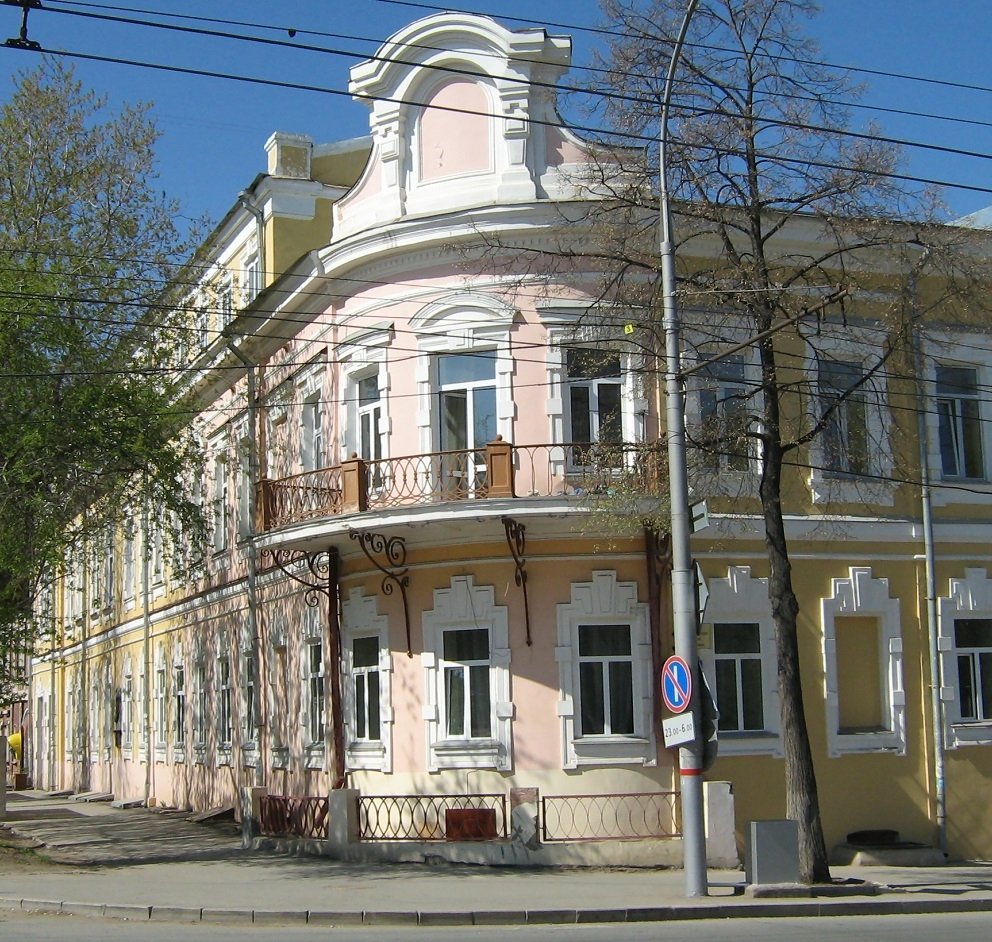
"Smyshlyayev House, Perm" by "Dan Stolyarov" (CC-BY-2.0)
Q: Describe your background and what brought you to the Wilson Center.
I was born in the city of Perm, Russia, which serves as a setting for Boris Pasternak’s famous novel Doctor Zhivago. For as long as I lived there, I would often pass by an old building with a balcony in the historic part of the city overlooking a park and the Opera House, which housed a children’s library. Little did I know that Pasternak’s novel, in which this building and balcony are featured, was the first major work of so-called “contraband” Russian literature to be smuggled out for publication abroad (1957) when the author lost hope to see it published in Russia. As it happens, what brought me to the Wilson Center is a project devoted to the first publications and reception of twentieth-century Russian literature outside the USSR, with Pasternak’s novel as its point of departure. Since I left Russia for the U.S. as a graduate student, I have always been interested in the role of geography and deterritorialization in literature and cultural production. My current project has enabled me to look deeper into the gap, or void, between Russian literature at home and abroad during the Cold War.
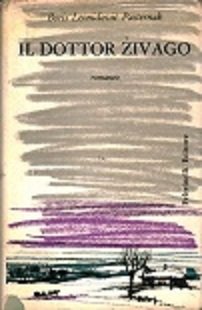
1st Italian edition of Pasternak’s novel Doctor Zhivago (Milan: Feltrinelli, 1957.)
Previously, I have worked on Russian émigré writing and cultural history, Gulag narratives, and representation of cityscapes in Russian prose and poetry. At Boston College, where I received my M.A. degree, I worked on an annotated correspondence of Ivan Bunin and Nina Berberova. In 2005, I came to Yale to work on my dissertation with the Lithuanian poet, former dissident and scholar Tomas Venclova, whom I owe much of what I know and have been interested in ever since. At Yale, I became fascinated with archival research and worked at the Beinecke Rare Book and Manuscript Library on my dissertation on Joseph Brodsky, whose archive was there at my disposal. I then taught at Williams College and the Georgia Institute of Technology, spent two years in Bremen, Germany as a Humboldt Foundation fellow, and in 2016 joined Hunter College, CUNY, where my current project has taken shape. I am honored that it has been selected for the Billington Fellowship at the Wilson Center, and I hope my project lives up to James Billington’s name and legacy.
Q: What project are you working on at the Center?
Tamizdat Project is a virtual environment that explores the history of circulation, first publications, and the reception of contraband Russian literature outside the USSR during the Cold War. Through a variety of rare and hard-to-find sources presented to the academic community and the general public worldwide, the project reconstructs the historical and socio-cultural climate in which masterpieces of Russian literature first appeared abroad before they could see the light of day at home, already after Perestroika. Although historically finite, Tamizdat Project is an ever-growing initiative, as its scope constantly expands and the website is populated with new materials, including image galleries, bibliography, editorial correspondence, book reviews, diaries, memoirs and other relevant documents.
The term “tamizdat,” coined as a derivative of samizdat (self-publishing) and gosizdat (state publishing), refers to the publishing industry “over there,” or abroad. It stands for the corpus of manuscripts rejected, censored, or never submitted for publication at home but smuggled through various channels across the Iron Curtain and printed elsewhere, with or without the authors’ knowledge or consent, and not infrequently for the purpose of being sent back to the Soviet Union in print form as ideologically subversive material. Tamizdat was a powerful weapon on the literary fronts of the Cold War. Until Perestroika, when the Curtain began to rust, it remained as firmly engraved on the Soviet cultural landscape as its more familiar and better researched domestic counterparts, samizdat and gosizdat.
Q: How did you become interested in your current research topic?
In 2012, I was teaching an undergraduate seminar “Russian Writers Behind Bars” at Williams College. For his final project, which he later published, one of my students chose to analyze two English translations of a short story by Varlam Shalamov, “The Snake Charmer,” which differed drastically from each other. I knew that before they were published in Russia, Shalamov’s Kolyma Tales first appeared abroad, in tamizdat. Luckily, the archive of the Russian émigré journal Novyi Zhurnal (The New Review), where Shalamov’s short stories were serialized, was held at Amherst College, only an hour and a half away from Williams. My trip to the archive revealed not only the itinerary of Shalamov’s contraband manuscript from Moscow to New York, but also the aesthetic and ideological reasons why the editor of Novyi Zhurnal decided to tailor the manuscript to his own liking and, as he claimed, to the demands of the Western reader. It also became clear that the early English translations of Shalamov’s prose in the 1970s were made from this first unauthorized and heavily edited tamizdat publication. This opened up an entirely new path of research for me, which I have been treading ever since, thinking and writing not only about other clandestine manuscripts from the USSR and their first publications and reception elsewhere, but also about questions of censorship, ideology, and identity on both sides of the Curtain.
Q: Why do you believe that your research matters to a wider audience?
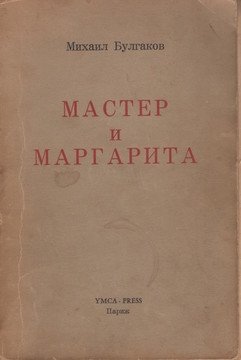
First uncensored edition of Bulgakov’s novel The Master and Margarita (Paris: YMCA-Press, 1967)
For the same reason that Russian literature – as any literature, for that matter – is by definition larger than and irreducible to the scholarship about it. Suffice it to say that tamizdat comprised at least 70% of what has then become the twentieth-century Russian literary canon: most of those books we teach today in our classes and freely order online or pick up from a bookstore around the corner were first published elsewhere in relation to where they had been written. Anyone who read The Master and Margarita remembers Bulgakov’s motto, “Manuscripts don’t burn.” But the fact that the uncensored text of Bulgakov’s novel itself was first published in Paris, away from its target audience and in a different cultural jurisdiction, is not as commonly known (not to mention other, less famous texts). From my ongoing work with volunteers from around the world and from presenting Tamizdat Project to multiple audiences in Russia, Europe and the U.S., I can tell that the general public wants to know where, how, and why the books that have shaped their identities were first published and read.
I believe that the project matters to the general public – both in Russia and elsewhere, particularly in the U.S. – because it tells the old story of the Cold War from a new, unfamiliar perspective: each manuscript on its way from the drawer to publication abroad and back to the USSR in a printed form is a case study, or a miniature model, of what the world used to be like not so long ago, when it was divided and polarized. It is true that after the Curtain was lifted and the USSR collapsed, the political mission of tamizdatbecame once and for all obsolete. Having lost much of its politically-oriented readership, tamizdathas, clearly, gone into history. And yet, looking back at the years that shaped tamizdatin the 1960s appears especially timely today, when we are witnessing a resurgence of the familiar Cold-War rhetoric and, worse, reenactments of some of its most austere policies.
What is more, the post-Soviet “thaw” of the 1990s, as it may now be called, made tamizdatobsolete not only politically but also technologically. It introduced an entirely new path for clandestine texts to “go live,” bypassing not only state censorship, but also geographical borders, however open they may have become by the 1990s, while the time previously required by a typical tamizdatoperation has also shrunk to just a few clicks. Yet while in the early days of the Internet, as Robert Darnton points out, “cyberspace seemed to be free and open” (the ultimate freedom of speech incarnate), today “it is being fought over, divided up, and closed off behind protective barriers,” suggesting an eerie (re)turn to the geo-political realities of the Cold War, when the world was divided. In case we forgot, Tamizdat Project serves as a reminder that “the power of print could be as threatening as cyberwarfare” (Darnton). In fact, it was more.
Q: What is the most challenging aspect of your research?
Its sheer scope, given the long history of state censorship in Russia, as well as the intricate tactics and undercover maneuvers on the cultural fronts of the Cold War, many of which to this day remain secret or have only recently been declassified.
What also makes it hard to choose the right tone, while making my research ever more captivating, is the often ambiguous attitudes of authors in Soviet Russia to publications abroad, which were, clearly, not only risky, but sometimes also ideologically and ethically compromised. Every author, and one who works under political pressure especially, writes for a target audience that speaks, both literally and figuratively, their native language and wants, above all, to be published at home, even knowing perfectly well how slim their chances are. While releasing one’s manuscript to samizdat and circulating it locally in the underground was considered an act of civic solidarity, courage and even heroism, letting it leak abroad and (not) seeing it published in tamizdat could be viewed as disgrace or even a betrayal of one’s civic duty as a writer and citizen.
Besides, because tamizdat was a truly transnational, global network, there is no one archive to go to, but instead an endless variety of both private and institutional archives scattered around the world, which makes one’s field research on tamizdat virtually inexhaustible.
Q: What do you hope the impact of your research will be?
To be sure, when it comes to texts that had to migrate abroad to escape state censorship in their home countries, Russian literature is not alone. My hope is that extraterritorial book publishing gains more attention beyond the confines of Russian literature as a field, across other historical and geopolitical contexts. I would like tamizdat to be inscribed into a global range of models and theory and start thinking about it more broadly and comparatively. True, of all examples, Russian literature is perhaps one of the most telling, and I hope that Tamizdat Project serves as a stepping stone for future explorations of comparable phenomena worldwide (even though a new name would have to be invented for a new project of that caliber).
The opinions expressed in this article are those solely of the authors and do not reflect the views of the Kennan Institute.
About the Author

Yasha Klots
Assistant Professor of Russian, Hunter College (CUNY)

Kennan Institute
The Kennan Institute is the premier US center for advanced research on Russia and Eurasia and the oldest and largest regional program at the Woodrow Wilson International Center for Scholars. The Kennan Institute is committed to improving American understanding of Russia, Ukraine, Central Asia, the Caucasus, and the surrounding region though research and exchange. Read more







